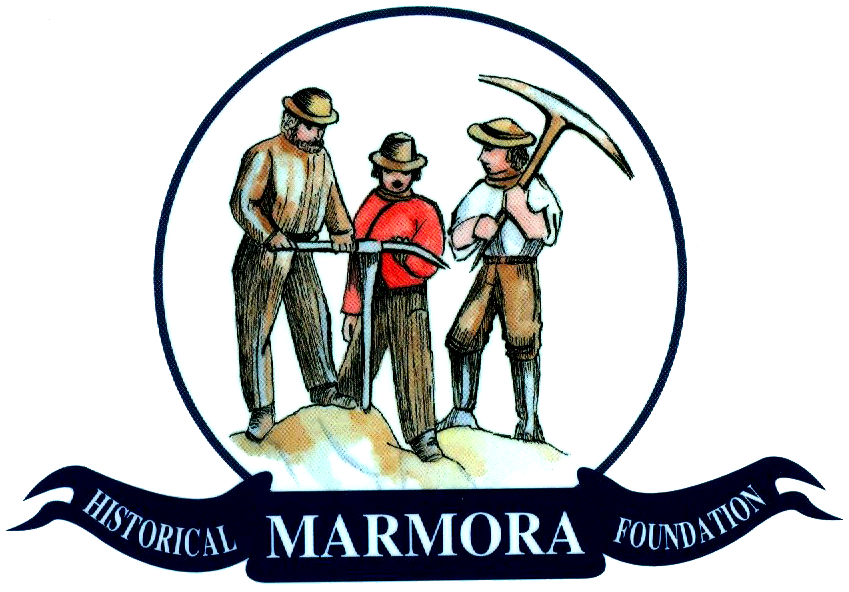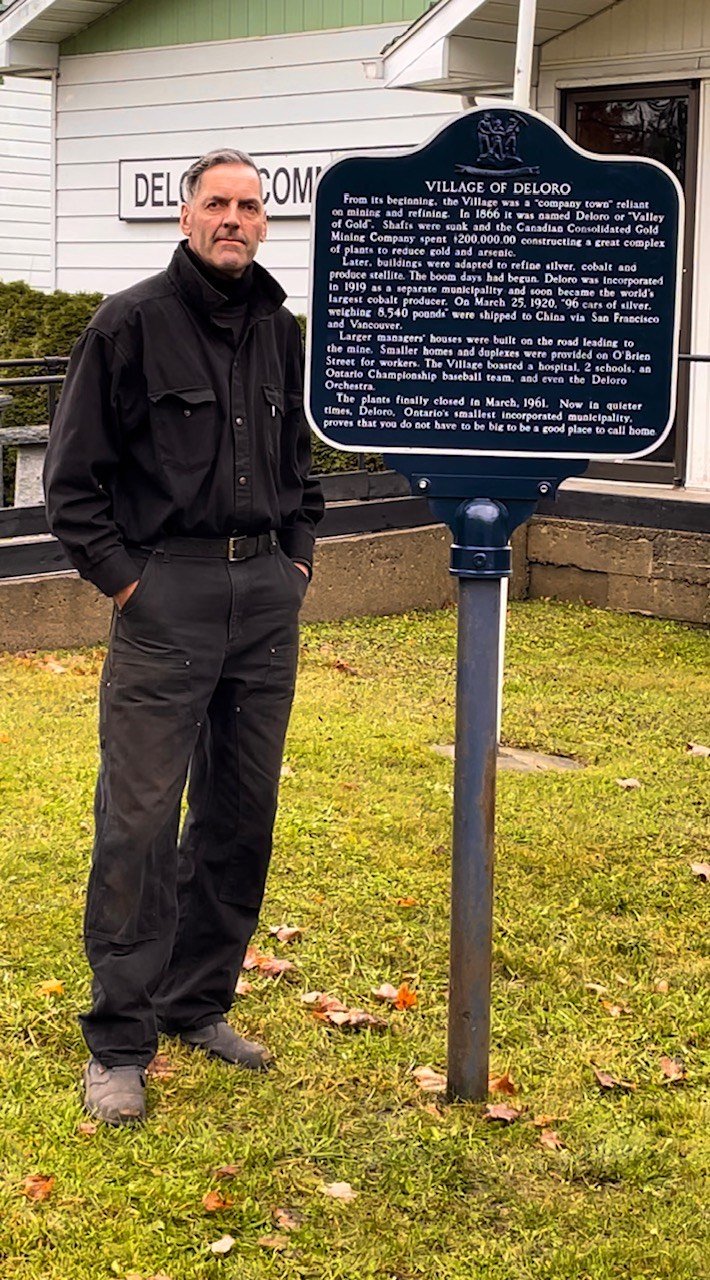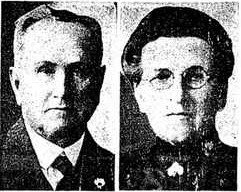Three Reviews for Zen River, poems and Haibun by Chris Faiers
Review by Katherine L Gordon
Published in "Umbrella", the magazine of The Quinte Arts Council
January/February 2009
page 5: Literary Arts
Review for Zen River, poems and Haibun by Chris Faiers
Hidden Brook Press, ISBN 978-1-897475-25-6,
54 pages, $15.95.
Reviewed by Katherine L Gordon
poet, publisher, editor, reviewer
Zen River is a lush little book of Purdy Country prose and poetry that will warm the winter-bound with its philosophy of the heart and promise of the cycling seasons.
The presentation is as refreshing as the leaf-bound river on the cover. It is a riveting romp from the sheer fun of the walking experiences with Chris's dog Chase in their melt into unspoiled nature, to the unavoidably sober sternness of the brooding shield. This rock of beginnings has challenged would-be iron men, gold-mining adventurers, vanished settlers, in fierce-country duel that only the lucky can win. The imprint of their trials shapes the land with songs and sorrows of survival.
Chris understands the pathos of this human journey as well as the pleasures of just surrendering to nature. He can make a turtle an event. Seeing through his empathetic eyes brings you face to face with the essence of fish and heron, spirits and shadows: "ahead on a trail/ shadow shape figure/ fades on approach."
Chris hikes us through this overwhelming country so that we come to know the challenge. Respect and awe replace trepidation, the vulnerability of the solitary man, as the land in its wilderness splendour intoxicates us: "red-headed woodpecker/stirs shaman instincts/" while Chris explores.
Chris Faiers has generously allowed his friends, contemporary writers, to share this adventure hrough the seasons of Al Purdy country. It is a thoughtful and inspiring read, from the wild lessons of the trail till: "your white flag/ tells us it's time/ to head home."
The twinkle of humour is spiced through the writing. Al Purdy in his A-frame would smile approval. This little green book will be a heritage favourite for those who treasure nature and our alluring lands of the shield.
Katherine L. Gordon.
Collection of poems 17th for PurdyFest organizer
The Community Press Online (Ontario)
Posted By Judy Backus, December 2008
Marmora and Lake - Chris Faiers has called Marmora home for the past 20 years, embracing the rugged countryside he hikes with his canine companion, Chase, ever at his side. The varying aspects of the land and its inhabitants have provided ample poetic inspiration for which Faiers has become noted. His work has been published in many of Canada's top literary magazines, and in 40 anthologies and scholarly works. It has been praised by Canadian writers Al Purdy and Irving Layton, the latter of whom wrote, "Your poems have verve, wit, range and rage. Bravo and an entire laurel tree of praise for them. They have lifted me out of the fits of depression that sometimes grip me reading the lifeless drivel that passes for poetry these days ..."
Faiers' 17th poetry collection, "ZenRiver Poems and Haibun," published by Hidden Book Press under its third set of North Shore Series books, will be launched along with the work of four other area authors at the Bohemian Penguin in Belleville on Dec. 18. Faiers says of the Brighton-based publisher: "Richard Grove has taken on an incredibly demanding project of publishing 30 local authors that are on the north shore of Lake Ontario." Faiers says the project will "give an artistic and literary presence to this area."
In the introduction to "ZenRiver Poems" Haibun explains its format as being a haibun, "a combination of prose interspersed with haiku. The form was created by its master, Matsuo Basho, who developed it writing travel sketches of 15th century Japan." In reviewing the book, Katherine Gordon, a fellow poet wrote, "ZenRiver is a lush little book of Purdy country prose and poetry that will warm the winter-bound with its philosophy of the heart and promise of the cycling seasons." Sections of the book highlight each of the seasons, with Faiers' involvement in the town's annual Halloween event featured in one. He writes, following a description of the festivities at the park:
"tiny witch
names me leprechaun:
young eyes still clear
four-year-old boy
in a skeleton suit -
me in fifty-five years..."
A founding member of the Canadian Poetry Association and Haiku Canada, Faiers has for the past two years, and with help from fellow poets, co-ordinated the Civic Holiday weekend PurdyFest which has attracted poets, both established and budding, from across the province.
During an interview in his Marmora home, Faiers said of Al Purdy: "One of the ongoing themes of his poetry was the land of defeat of his ancestors ... What has been said about me and what I am doing with ZenRiver Poems and Haibun, and what we are doing with PurdyFest, is we are not trying to conquer the land like the early Irish and English settlers who came here, and because we are up on the (Canadian) Shield, the land isn't generally hospitable. We are learning to live in concert with the land the way the First Nations people did and not try to beat it."
Faiers, who participated in the recent Showcase of the Arts, said he had always realized there were artists within the community but that there had been "no organization to pull us together." Such an association now exists and welcomes artists and artisans as well as writers, among them the seven whose work formed part of the showcase.
Following is a glowing review by Terry Ann Carter
in "World Haiku Review" Vol. 7, issue 1 March 2009
Zen River Poems & Haibun By Chris Faiers
Hidden brook Press (www.hiddenbrookpress.com) 2008 ISBN: 978-1-897475- 25-6
perfectbound, English language, $15.95 CDA
Reviewed by Terry Ann Carter
Shaving his head and donning the robes of a Zen monk, Matsuo Basho and his travelling companion and fellow monk, Sora, set out on a journey between Miyagino and Matsushima, Japan, in the spring of 1689. From early 1690 into 1694 Basho wrote and revised his “travel diary” Oku-no-hosomichi the narrow road within; the narrow way through the interior. Oku-no-hosomichi is much more than a poetic travel journal. Its form haibun combines short prose passages with haiku; yet, the heart and mind of this little book, its kokoro, cannot be found simply by defining form. His account grew out of arduous studies in poetry, Buddhism, Taoism, Confucianism, Shintoism and some very important Zen training. Basho was a student of Saigyo, a Buddhist monk-poet who lived five hundred years earlier (1118 – 1190), and who is the most prominent poet of the imperial anthology, Shinkokinshu. Like Saigyo before him, Basho believed in a co-dependent origination, a Buddhist idea holding that all things are fully interdependent, even at the point of origin.
And like Basho before him, Chris Faiers, an English language haiku poet, meditator, custodian of a Buddhist retreat, ZenRiver Gardens, believes in the interdependence of all life, the reflective power of creative meditation, the reverence for walking and dreaming. Faiers, a long time devotee to the Japanese literary forms of haiku and haibun, has established himself as a haijin (teacher/poet) and leading voice in the haiku community. His poems have appeared in forty anthologies and scholarly works including those published by McGraw-Hill and Simon & Schuster. His poems have been praised by major Canadian poets Al Purdy and Irving Layton. Even George Harrison (of Beatle fame) enjoyed his poems in the late 60’s.
Faiers’ newest collection, ZenRiver Poems and Haibun is a little book filled with a large heart mind (kokoro) spirit. Although Faiers is the main contributor, there are selections also by Stan White, Warren Fraser, James Deahl, and Katherine Gordon. The book consists of an introduction, seasonal haibun, and three haibun written during an earlier period: A Psychedelic Basho, Lavenham, and Formentera.
The haibun is a literary form that consists of a short prose piece concluding with a linked haiku or a longer prose piece with interspersing haiku; haiku being that (often) three lined (or shorter) seventeen syllabled (or shorter)grasp at the aha moment. January Thaw, although not the strongest piece in the collection, serves as an introduction to the poetry and to the new year to follow. Filled with temperature reports and the antics of his beloved dog, Chase, the first haibun concludes with a haiku by Warren Fraser, containing a beautiful image of snow drifting by sumacs. It is not until Faiers heads into Hangin’ With Bubo that things get really interesting. Faiers’ description of the Ontario trails near the old quarry hamlet of Malone and references to Buddha, sundogs (parhelions) and rainbows, reminds a reader of the grace of his mentor, Basho, and the linked haiku
Buddha so beautiful
a veil is required
becomes stronger with each subsequent reading.
The haiku sequence titled Crow Visits Wolf includes haiku and haiku-like poems. Perhaps the Zen presence is giving way to words like “consciousness” and “blue sky practice” appearing in haiku when (traditionally in North America) abstract notions have been omitted. blue sky mind crow call/ Milton Acorn? might have been better suited to a longer homage to the Canadian people’s poet.
In Snow Melt Meditation, Faiers’ explains his meditation, “ to not slow down the process with any rituals of any kind ...” and later “I’ve been practicing meditation for forty years, as long as I’ve been writing haiku. Sometimes I’ve been a devout and regular meditator, but more often meditation lightens my “monkey mind” thoughts... occasionally I compose poetry during inspired moments entering or leaving a session, and every now and again, I’m privileged to sit with the Buddhas.” We are privileged to join Faiers on his self exploration, his experience of white light, as he writes, “the river carrying the white lightness of the spring snowmelt so bubbly and fast flowing.”
As the haibun move through the seasons, so we as readers progress through daily meditations and reflections. Not a morsel goes unnoticed by the keen senses of this finely tuned poet. We find great blue herons, shaman carvings, haunted pumpkin walks, palm frond reflections, the flap of prayer flags, the carcass of a frozen whitetail deer. One of the finest haiku in the collection is this one:
dry leaves
fill the basin below
moss covered falls
With its allusions to opposites (the dry leaves, the waterfall) the presence of absence, the shape of the dry basin clearly outlined against the growing moss covering fallen stumps which gives its own olfactory resonance, this haiku captures an ordinary moment with extraordinary skill.
If the seasonal haibun give us glimpses of Faiers’s thoughts as he hikes (present day) through the ZenRiver Gardens with his trusted companion Chase, then it is the ending haibun that give us great chunks of his heart as an earlier poet, a peace activist during the Vietnam War era, a traveller in Britain with an aging father, an explorer of the remote and mysterious island of Formentera, off the coast of Spain. It is in this last piece that prose becomes its sweetest and the linking haiku, a gem.
“The next day we roamed around looking for a place to rent. This was a dharma time for me, and I met an American who was about to return to the States. He offered to let me rent the crude farmhouse he had been living in, as he still had a month’s rent left. I paid him a few hundred pesetas, and Mette and I prepared to move in the next day. The farmhouse was stone, and beautiful in a rustic way. There was a well in front, and the name “Maria Jerome” painted over the front door. There were only three rooms, a kitchen, a bedroom and a den with an open fireplace, but to us it was a mansion. “
constellations
of sesame seeds
in honey
As in every poetic collection since the beginning of written time, some offerings are stronger than others. Faiers is a poet of constancy; he keeps true to the lineage behind him and the vision he sees in front of him. He is quick to add his own twists and turns, even keeping a keen sense of humour (frogs croak/spring horniness/April Fool’s Day). The kokoro of this little book is mighty.
Terry Ann Carter is a haiku/ tanka poet who travels the world with a small spiralled bound notebook. She has composed poems in the rainforests of British Columbia, the mountains of Peru and Tokyo Central Station. She participated in the Basho Festival in Ueno, Japan, in 2004 and has given readings in Canada, the U.S., Japan, Taiwan, China, Singapore. Her poems appear in haiku and tanka journals world-wide.
































